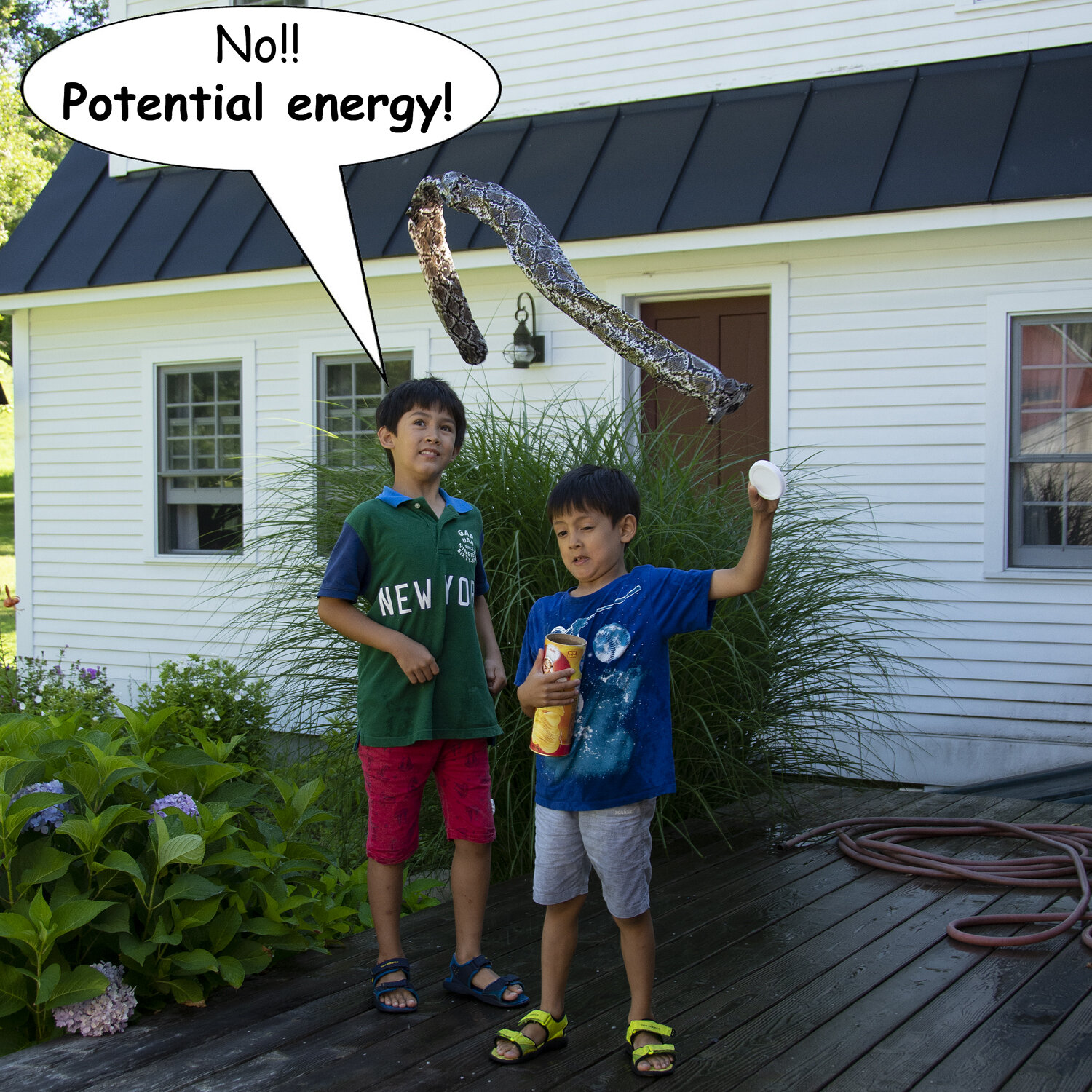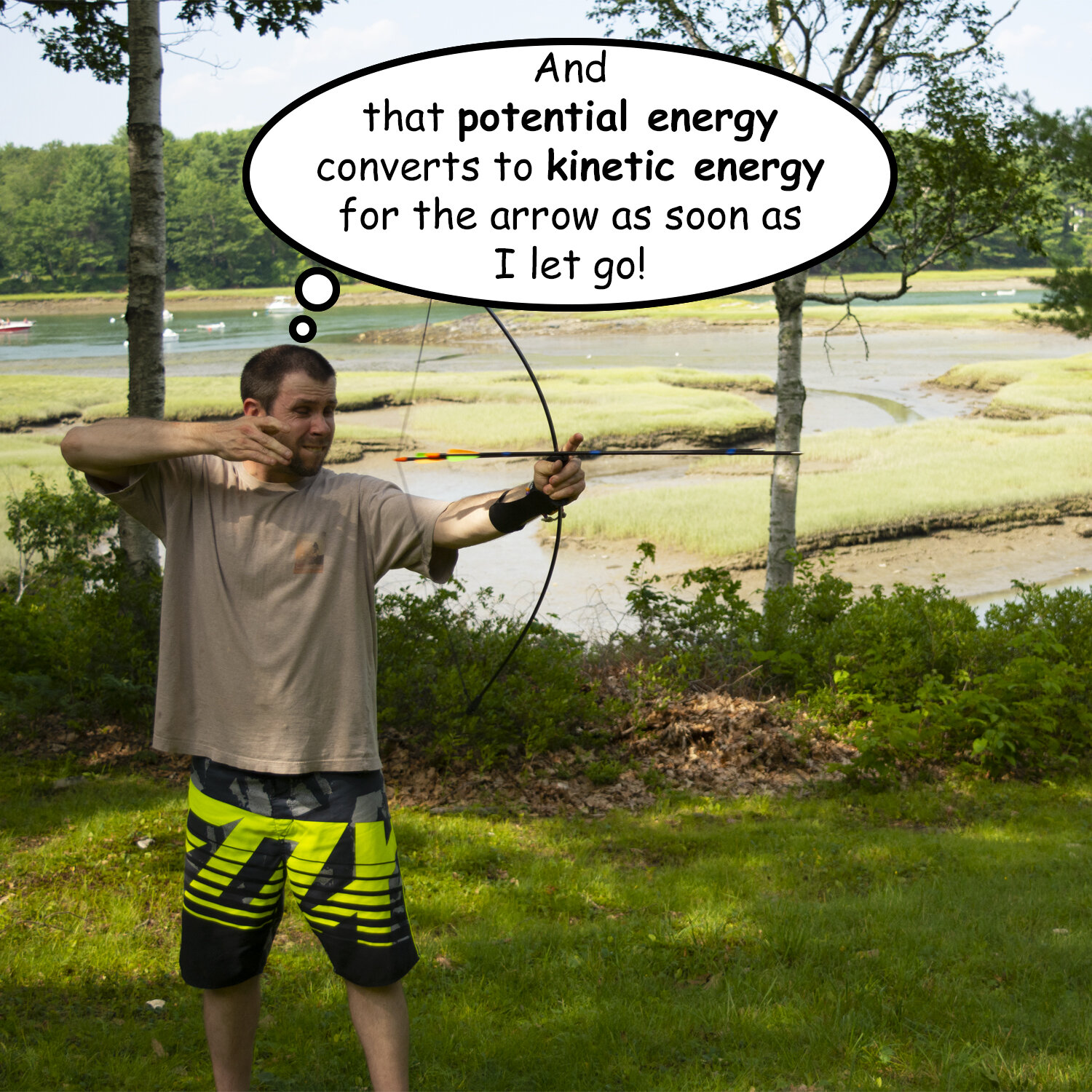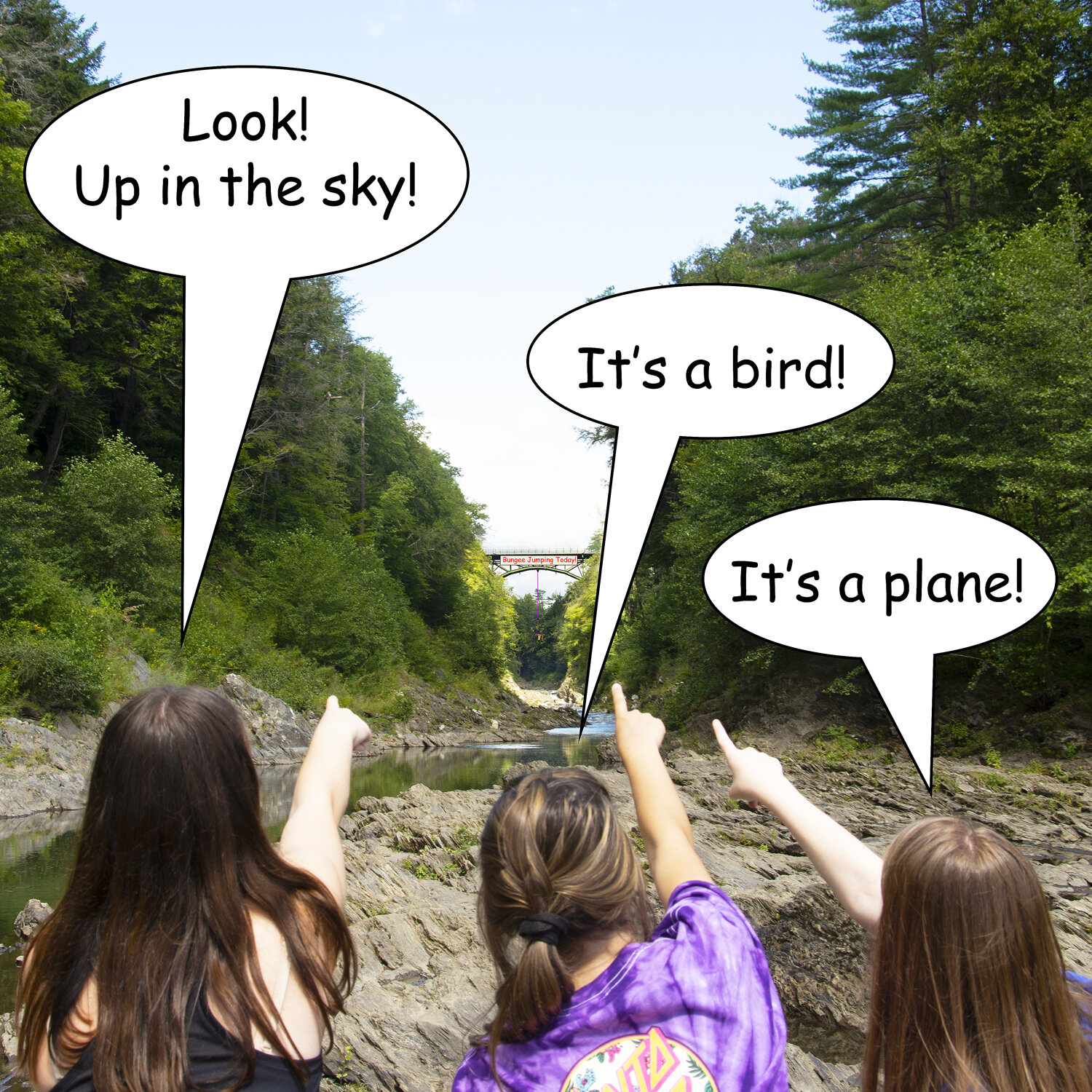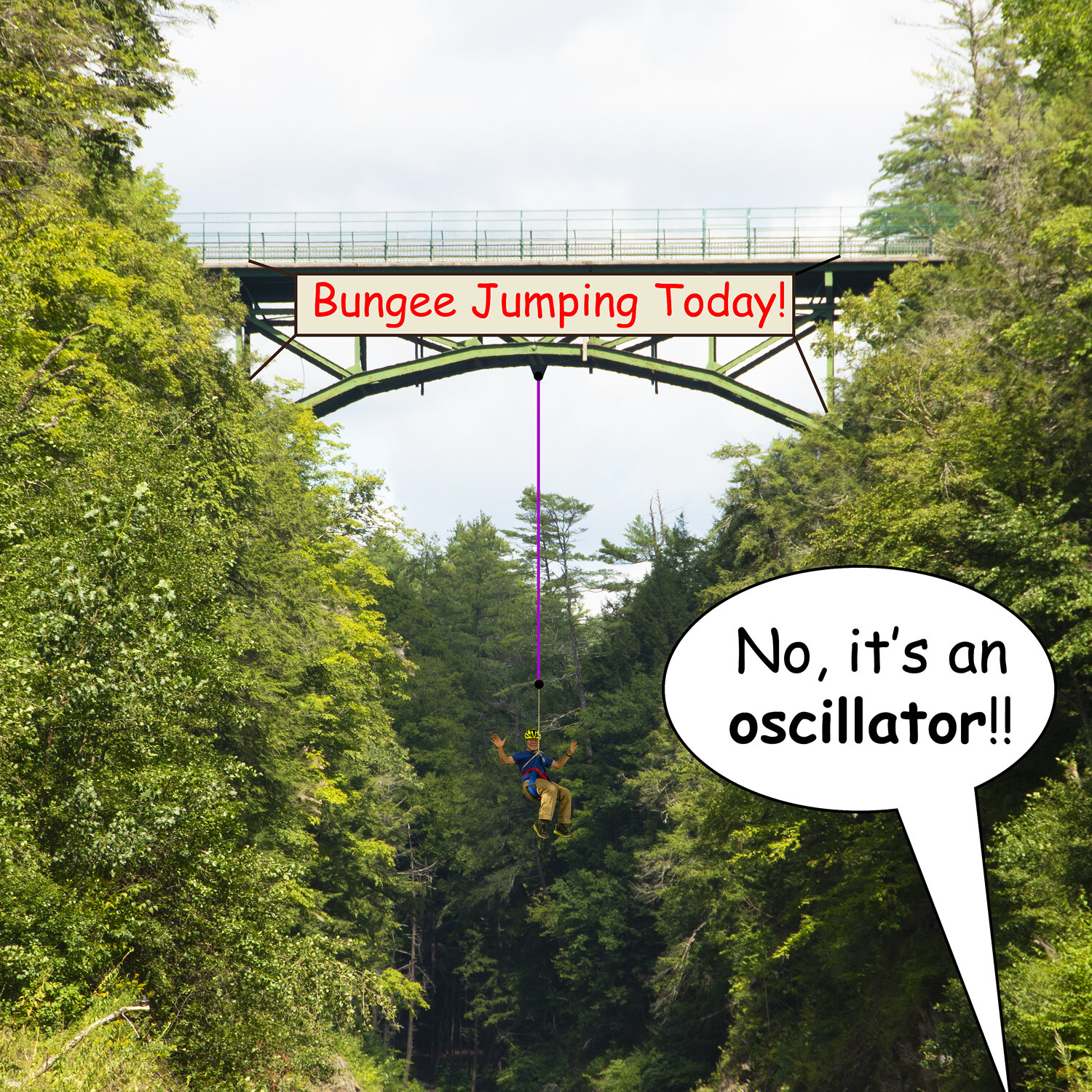Review
We began this section learning about energy and work. There are two types of mechanical energy: kinetic and potential. Potential energy can be due to the height of an object above the ground. It can also be stored in a spring that is compressed or stretched beyond a comfortable position.
Kinetic energy only exists if something is moving.
Conservation of energy was introduced. When energy is conserved, the total mechanical energy - kinetic plus potential - stays the same. The energy can change from one form to the other but the sum of the two remains the same.
While we use the term “work” in many ways, we learned that in physics, it has a very specific meaning. For work to be done, you have to exert a force along some distance that is, at least in part, parallel to the direction of the force. If you lift a heavy bucket, work is being done. But if you now carry that bucket across the yard, no work is done because the direction of motion - parallel to the ground - is perpendicular to the force, which points up along your arm to keep the bucket from falling. Work is important because it can be converted to kinetic or potential energy.
Energy turns out to be very helpful in describing things that move back and forth, like a weight on a bouncing spring or a person swinging on a swing. This kind of motion is called simple harmonic motion and the object in motion is called an oscillator.
For oscillators, there is a continual transfer of energy from kinetic to potential and back again. We learned several new terms that are used to describe oscillators and other examples of periodic motion. The period is the time it takes an oscillator to complete one full cycle - or to return to its starting point. The frequency of an oscillator is the period upside down. That is, if the period is the time to complete a full cycle, the frequency is the number of cycles that are completed in a certain time.
For an object bouncing on a spring, the mass of the object and the stiffness of the spring both contribute to the period of oscillation. For a pendulum or person swinging on a swing, only the length of the pendulum or swing contributes to the period of oscillation.
Birds flap their wings to fly and their wings are another example of oscillators. The wings are more like a pendulum than a mass on a spring. Thus small wings flap with a shorter period (or higher frequency) than large wings.
And large wings flap with a longer period (or a lower frequency).
During an oscillation, an object moves back and forth about an equilibrium position. The amplitude is the maximum distance the object moves away from the equilibrium position.
While it is nice to imagine perfect oscillators that keep going forever, in an imperfect world the amplitude tends to gradually decrease over time. But if a small force is applied to an oscillator each period, the oscillator will keep going as long as the force is applied. This kind of motion is called forced harmonic motion and is common when someone pushes you on a swing or in a hammock.
There are lots of oscillators in our world. Some are not as simple as the ones we have considered. Sometimes the potential energy is due to both the height above the ground and the compression or stretch of a spring. But they are all good examples of energy transferring from one form to another.
As you look around, see if you can identify objects that have kinetic energy or potential energy. Look for examples of oscillating motion or any motion where there is a transfer of energy from kinetic to potential. These examples are everywhere!













